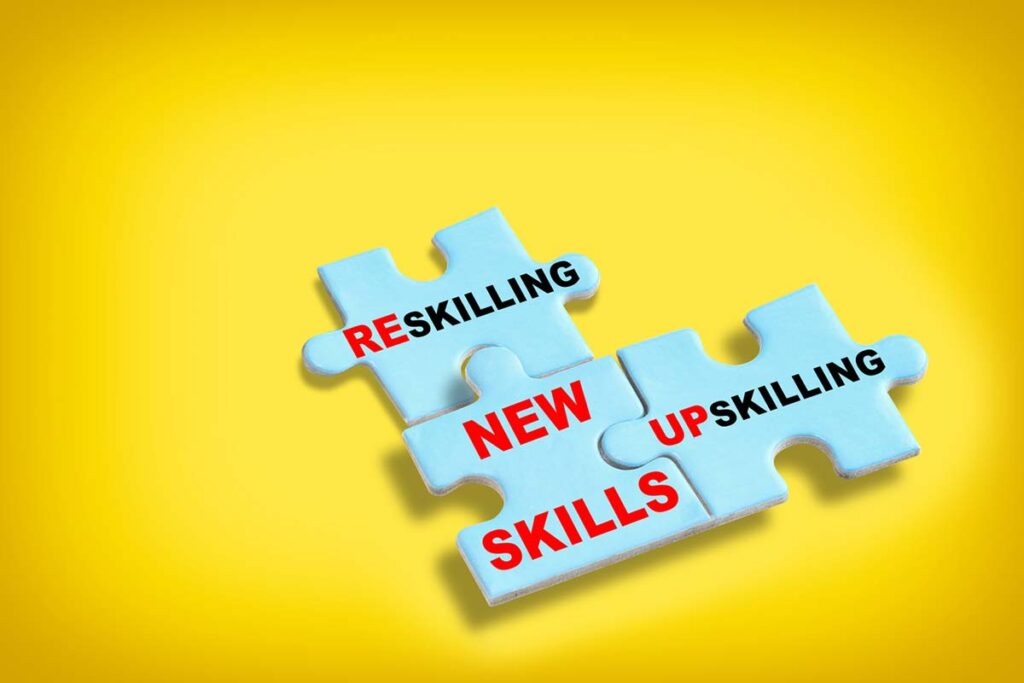Habits are the foundation of our daily lives; they provide structure and guidance when we need it most. We have personal routines for how we eat, how we interact with others, and how we spend our free time. While we might have an idea of how we form our habits, how does an entire organization form a great habit, and what kinds of habits do workplaces need to focus on most?
Upskilling is one of the most crucial habits organizations should focus on today, but not every workplace makes it a priority. This post will help you understand what upskilling is, why it’s vital for a successful business, and how organizations can turn it from a distant idea to a habitual part of the workplace.
What Upskilling Is And Why It’s A Habit You Need To Form
What is Upskilling? Sometimes it’s easy to feel overwhelmed by new information and the rapid speed at which the workplace is changing. Upskilling addresses this challenge. Upskilling is the process of providing additional training services to learners to help them build upon the skills they already have.
- Upskilling focuses on improving a current learner’s skill set, typically through training, so they can advance in their position, feel confident in their role, and reduce the need for hiring new workers.
It’s important to remember that upskilling differs from reskilling, which is when learners acquire new skills for a new job.
Why is Upskilling Important? The pace at which technology is evolving is unprecedented in human history. While this progress is exciting, it’s also creating a skill gap between the existing workforce’s skills and the skills they need to do their jobs well.
- A report by the U.S. Chamber of Commerce Foundation found that 74 percent of hiring managers see skill gaps in their workforce and that this lack of skills is one of the biggest hiring challenges.
Majorly successful companies like Amazon and PwC have made upskilling programs a part of their everyday operations, which helps prevent turnover, provides growth opportunities, and increases work productivity and satisfaction. Scientists say it takes about 21 days to form a habit. While three weeks may not sound like a long time, it’s a great opportunity to kickstart a new habit and change your organization’s work culture. Here are two ways to get started.
Upskill Through Personalized Training
Personalize Training: If learners see that their training is relevant to their current profession and can help them become better employees, they’ll be more likely to enthusiastically engage in training.
- Start by offering a virtual or written engagement survey to determine what learners want to know and what skills they want to develop. After getting results, tailor the skill training to target specific gaps mentioned by learners so that you aren’t wasting anybody’s time.
It’s not enough just to provide training. Create a post-training action plan to ensure that learners got the most out of their experience and know-how to apply their new skills in their daily work life.
- Consider implementing 30-minute debrief sessions after each workshop. This could take the form of a virtual breakout room discussion or a one-on-one conversation with the learner.
Debriefing will give learners time to reflect on their new knowledge, ask questions, and talk to their colleagues about any challenges or victories they had.
Creating A learning-friendly Workplace
Instill a coaching culture: The first step in creating a new habit is making a firm decision. Let your learners know that you are making a change in the workplace, establish your expectations, and clarify the reasons why this habit will benefit everyone. To instill a coaching culture, consider the following ideas:
- Host a monthly “lunch and learn” session where experts and more experienced coworkers can talk with new hires or employees who are in the process of reskilling.
This informal, friendly chat will not only encourage a workplace culture of constant learning but also help learners build relationships with their coworkers.
Create a more inclusive educational assistance policy: Increasingly organizations are distinguishing themselves via their educational/tuition assistance policies. Ensure that these policies are inclusive and meet the needs of all employees and consider the following:
- Shift the program from a reimbursement to a prepayment/direct payment model so hourly employees/lower paid employees are not forced to make decisions between school and living expenses.
- Expand the program to cover a wider range of offerings – not just degrees – but certificates, certifications, and credentials.
- Add academic advising as a pillar of your program to help your employees to select programs and pathways that will provide them with meaningful opportunities for advancement.
Upskilling One Step At A Time
James Clear, the author of Atomic Habits (2018), reminds us that we can build habits by making even the smallest changes. With the help of great course development and personalized content, you can start building upskilling habits today that will benefit your learners for years to come.
How has your organization worked to create a culture of upskilling? What are some skills you would like to expand upon in your profession? Share your thoughts with us here at WeLearn, where together, we learn.

